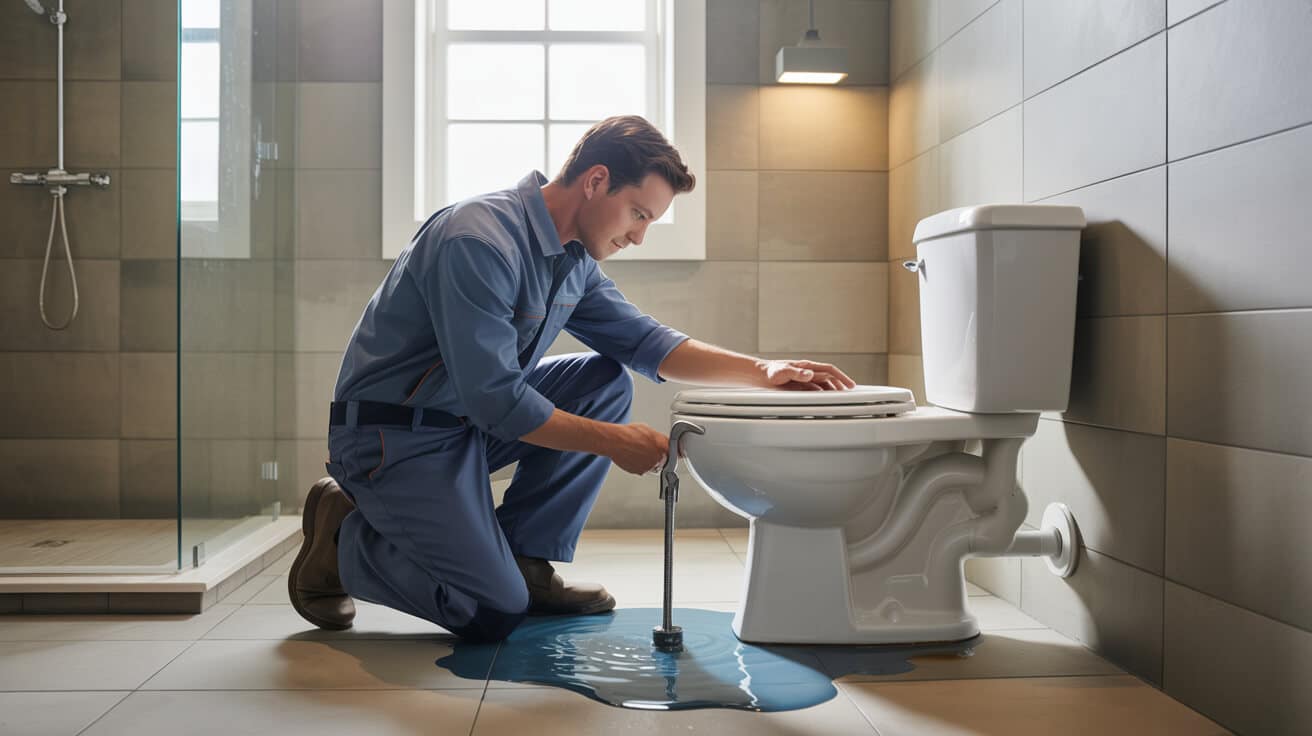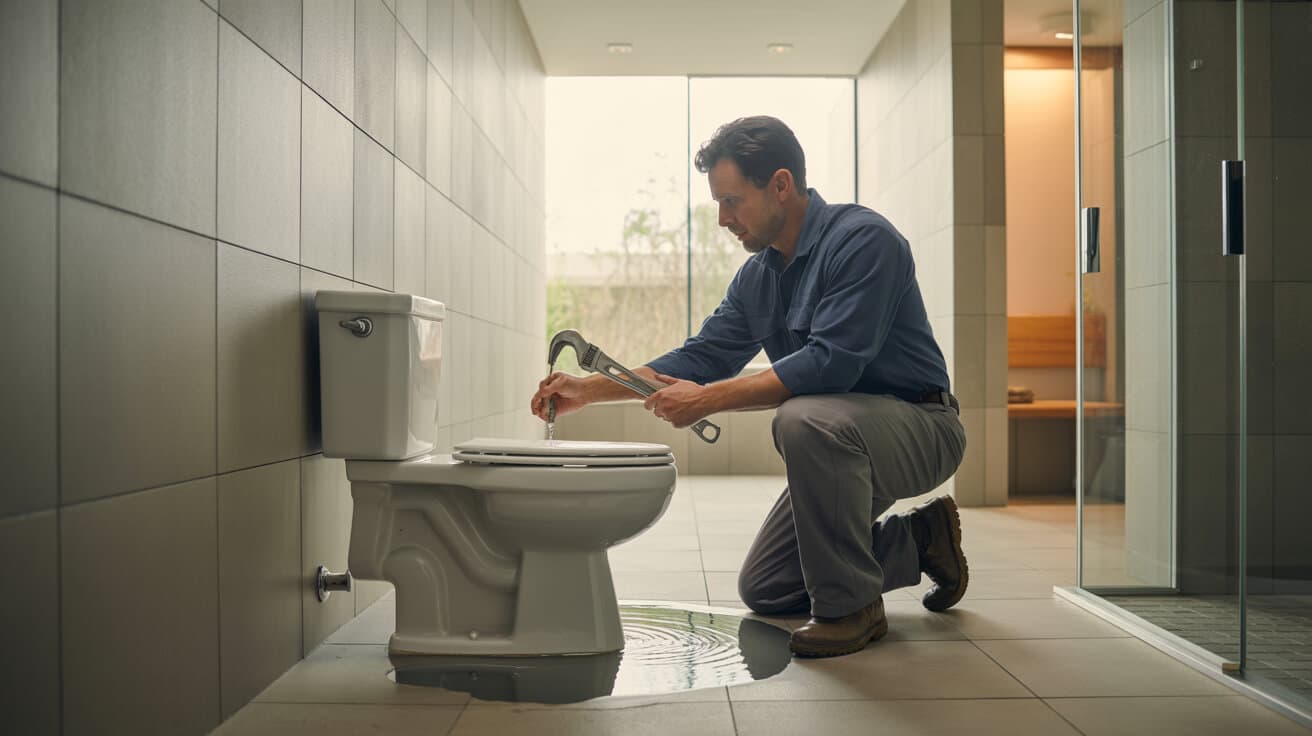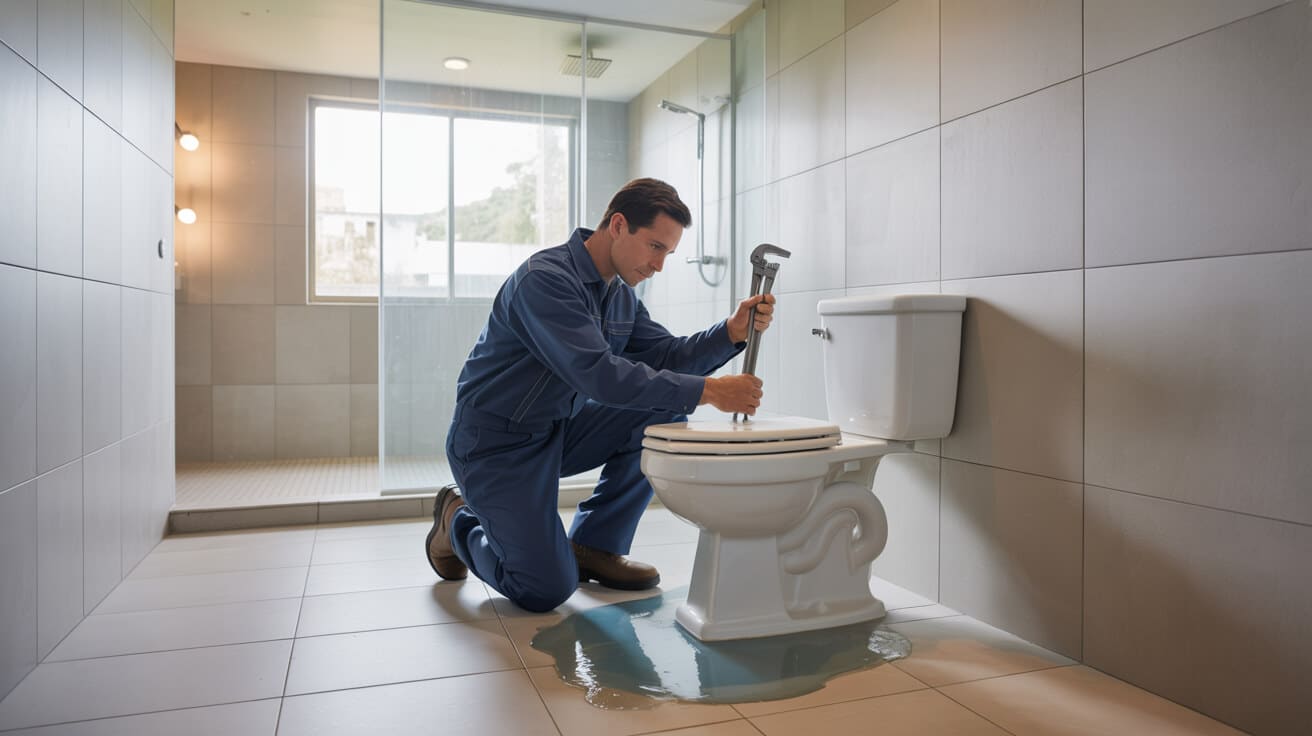Sanitary overflow incidents can arise suddenly, disrupting daily activity and threatening your company’s or your building’s physical assets. Fast response and methodical management by experienced professionals are essential to minimise structural water damage, prevent the spread of contaminants, and avoid escalating repair costs. The maintenance of functional, regulation-compliant sanitary installations is vital for homeowners, tenants, landlords, facilities managers, and service providers. For organisations operating within regulatory frameworks, such as rental agencies or property management firms, adherence to statutory repair obligations is central to long-term reputation and legal security. Your decision to act quickly often determines the severity—not the inevitability—of downstream consequences.
Etymology or name origin
The phrase “overflow” fuses “over”—denoting excess—and “flow”—meaning movement of liquid, encapsulating the premise of liquid volumes surpassing predetermined limits. “Cistern” is rooted in the Latin “cisterna,” a receptacle for holding water, which evolved through Old French (“cisterne”) into contemporary English usage. “Float valve” references a buoyant component, introduced in the 19th century, that automatically controls inflow based on surface position. Over time, these technical terms became standardised within regulatory literature and manufacturer technical documentation, ensuring clarity across regional, regulatory, and sector boundaries.
Overview and context
Toilet overflow is a prevalent phenomenon encountered in a wide spectrum of properties—detached homes, apartments, commercial premises, and institutional facilities. Failure of internal cistern components, improper pipework, obstructions, or lack of maintenance may all lead to overfilling and uncontrolled discharge. In high-occupancy or ageing buildings, the risk profile increases due to repetitive usage cycles, material fatigue, and delayed repairs.
Effective prevention and remediation depend on understanding not only the mechanical design but the wider context in which plumbing systems operate. Modern toilet assemblies employ a convergence of gravity-fed, pressurised, and mixed material structures, requiring attention to unique site characteristics. As building codes evolved, universal overflow management became a core requirement, bringing into focus liability for property managers and building operators. Disruptive overflow events compromise not just your physical environment but also internal water supply stability, a factor central to every service agreement or lease arrangement.
Underlying principles
Overflow management in sanitary installations is premised on redundancy and automatic fail-safes. The fill valve, linked to a float, ensures precise water delivery. Should the water rise above intended levels due to any malfunction, a strategically placed overflow pipe diverts the surplus, typically outside or to a safe drain, preventing uncontrolled release in occupied zones.
General occurrence
Overflow anomalies frequently emerge in rental dwellings, public toilets, hotels, educational facilities, and commercial offices. Contributing causes include worn mechanical parts, installer error, limescale and debris, unapproved modifications, or seasonal pressure surges in supply lines.
Building and property contexts
The context of your property has a strong influence on risk and mitigation strategies. For example, shared stacks in high-rise housing increase the possibility of cross-unit propagation, while concealed cisterns may introduce delayed detection and a need for specialised maintenance. Your company’s asset management protocols must reflect these variations, factoring design, occupancy, and historical repair records.
History
Origins
Primitive waste management systems used open channels and pits to direct overflow away from living quarters, reducing local standing water and pathogens. With urbanisation in the 19th century, the need for more sophisticated internal plumbing resulted in the birth of the closed cistern, dramatically improving sanitary conditions. Early designs were rudimentary, relying on manual control and basic floats.
Development of mechanical cisterns
The broad adoption of mechanical cisterns in Victorian Britain led to the widespread deployment of float-controlled filling devices, constructed from metal alloys and later, plastics. The 1848 Public Health Act mandated effective wastewater containment, catalysing further evolution. Manufacturers such as Thomas Crapper popularised the modern syphon, enabling reliable single-flush cycles.
Modern standards and professionalisation
By the mid-20th century, British and international standards converged to require independent overflow drainage for every sanitary fixture. The formation of the Water Regulations Advisory Scheme (WRAS) codified acceptable products and layouts. Brands such as Fluidmaster and Dudley advanced the reliability of valves and seals. Recent professionalisation trends emphasise evidence-based diagnosis, training, certification, and the retention of digital maintenance records—practices fully integrated into the offerings of companies like Plumbers 4U.

Concept and description
Schematic and main components
A typical toilet overflow prevention system incorporates:
- Toilet cistern: Reservoir, most often ceramic or durable PVC, housing water used for each flush.
- Float or fill valve: Buoyant device controlling inflow, shutting supply when water reaches a preset level.
- Flush (drop or syphon) valve: Releases the cistern’s contents into the pan on activation.
- Overflow pipe: Direct conduit for excess water should primary control fail, sized by regulatory standards.
- Seals and washers: Maintain watertight joins at all interfaces.
- Emergency isolation valve: Fitted to supply lines, permitting rapid shutdown in domestic and commercial environments.
Normal operation
Upon triggering the flush mechanism, the stored water is discharged, cleansing the pan and recharging via the fill valve as the float returns to its raised position. The overflow pipe remains unused during normal cycles; it serves as an insurance route in the event of malfunction or improper adjustment. Any water making contact with this channel is a direct signal of component dysfunction and prompts mechanical or professional intervention.
Role in system integrity
Properly functioning overflow controls are non-negotiable for your property’s longevity. They safeguard structural elements (floorboards, plaster, electrical conduit) and mitigate indirect threats such as rot, airborne contaminants, and accidental contact with live wiring in affected spaces. Buildings with scheduled, WRAS-compliant maintenance regimes experience markedly fewer instances of progressive water damage.
Functionality, purpose, and practical applications
Core function
Overflow prevention mechanisms ensure that, regardless of user or equipment error, water remains contained or is safely routed to a recognisable, non-damaging discharge point. This protects your dwelling’s or business’s assets, fixtures, and occupants, while upholding regulatory mandates for hygiene and public safety.
Benefits
- Defence against direct (soaking floors, collapsed ceilings) and indirect (mould, slips, circuit shorts) water-related risks.
- Maintenance of sanitary standards for both private residences and high-traffic venues.
- Assurance for property managers that legal tenant and landlord obligations are met, reducing the possibility of dispute or regulatory censure.
Domain-specific applications
- Rental properties: Ensure rapid, documented response to reported issues, satisfying the Housing Health and Safety Rating System (HHSRS).
- Commercial buildings: Centralised asset registers and digital inspection logs facilitate quicker diagnosis and less downtime.
- Public facilities: Emphasis on hygiene, accessibility, and service continuity in high-use restrooms, hotels, and schools.
Classifications, types, and variants
Gravity cisterns and dual-flush
Traditional gravity-fed cisterns rely on the downward force of water for flushing and commonly utilise layered float-ball assemblies. Dual-flush systems, now increasingly prevalent, use pressure-assisted designs and often integrate enhanced overflow channels to support both water efficiency and risk management.
Fill valve and flush mechanism variants
- Ballcock: Simple, cost-effective, but prone to jamming and slow shutoff.
- Diaphragm fill valve: Quicker, quieter fill, with improved resistance to scale.
- Drop and syphon flush valves: Single-push or dual-function for partial/full flushes; design variation impacts likelihood of leakage.
Overflow pipe materials
Old installations may use lead or copper for overflow, while current regulations favour rigid or solvent-weld PVC/ABS due to chemical and mechanical resilience.
Systems, tools, and methodologies
Essential tools
- Adjustable wrench, slip-joint pliers, and screwdrivers for dismantling and reassembly.
- Valve keys for emergency shutoff.
- Mirror, torch, and inspection camera for concealed/cabinet cisterns.
Spare parts and replacement kits
- OEM and WRAS-approved fill/flush valves, float balls, and washers.
- Overflow pipe repair kits with pre-sized connectors, seals, and adhesives.
Diagnostic methodologies
- Water flow and pressure checks using calibrated gauges.
- Dye tracing for leak point identification.
- Step-by-step isolation—deactivating each suspected component independently to pinpoint root cause.
Professional repair sequence (Plumbers 4U example flow)
- Arrival, hazard review, and area protection.
- Water isolation, initial assessment, and clean-up.
- Structured component-by-component inspection.
- Precision replacement of failed parts using certified inventory.
- Reintegration and full-cycle test, including overflow simulation.
- Generation of summary for your records and compliance logs.

Stakeholders and industry roles
Homeowners and tenants
- Responsible for rapid reporting and, where feasible, prompt containment using main or local isolation valves.
- Encouraged to maintain familiarity with their own fixtures, including how to safely shut off water or identify early symptoms.
- Proper documentation of communications with landlords or service technicians acts as a safety net in insurance or deposit disputes.
Landlords and letting agents
- Must comply with Housing Act obligations, including swift remediation, formal documentation, and retention of service history logbooks or e-records.
- Benefit from trusted service partners exemplified by Plumbers 4U, who supply digital compliance certificates and aftercare schedules following every repair.
Property managers, facilities directors
- Mandated to enforce inspection regimes, schedule planned maintenance, and enable unambiguous escalation lines during overflow emergencies.
- Oversee cross-unit protocols in multi-tenant arrangements, minimising further spread and service impact.
Plumbing and heating engineers
- Tasked with both preventative and direct response roles; their remit covers everything from part specification, quality control, to final sign-off.
- Adherence to WRAS, Building Regulations Part G, and additional local codes is built into workflow management and client communication procedures.
Legal, regulatory, and ethical considerations
Codes and guidance
Legal standards require manufacturers, service providers, and owners to uphold well-defined design and repair specifications, including maximum permissible lever heights, outreach, and secondary drainage for every cistern. WRAS certification is mandatory for parts, with regular recertification audits.
Statutory responsibilities
- Landlords: Completion and storage of formal repair logs, immediate repairs based on tenant notice, and periodic inspection of common services in HMOs.
- Property managers: Legal duty to inform stakeholders of non-conformity or hazard during annual or interim reviews.
- Your documentation: Provides an audit trail, supports insurance claims, and facilitates claim defence, asset valuation, and compliance checks.
Health and safety
Prompt remediation is required to limit exposures—particularly among vulnerable populations (elderly, disabled, children)—to standing water or unsanitary flooding. Environmental guidelines prohibit untreated water exit into the environment, further supporting rigorous overflow management.
Performance metrics, data, and measurements
Failure rates and incident frequency
Studies reveal that cistern overflow incidents constitute approximately 22% of residential and small commercial water losses, based on claims data and WRAS/industry insurance records (data varies by region and system age).
Table: Typical component lifespan and incident risk
| Component type | Average expected life (years) | Incident risk (annual, %) |
|---|---|---|
| Fill valve, ballcock | 6–10 | 12 |
| Diaphragm fill valve | 10–15 | 7 |
| Syphon/flush mechanism | 8–12 | 9 |
| Overflow pipe (PVC/ABS) | 20+ | 4 |
Routine checks cut risk by 30–60%, a compelling reason for embedding this task in your maintenance protocol.
Cost considerations
Expenses range from minor—replacement parts and labour for a domestic property—to significant reconstruction and insurance excesses in the case of widespread flooding. Compliance-driven organisations may also incorporate overhead for documentation and aftercare.
Response and quality benchmarks
- First response: Most professional providers, including Plumbers 4U, aim for same-day or within-24hr response windows.
- Quality assurance: Full part certification, documented fitment, and post-repair retest are industry baselines.
Challenges, barriers, and limitations
Operational and technical issues
- Access challenges in old or bespoke-built installations.
- Lack of universal part compatibility, resulting in necessary retrofits.
- Environmental limitations—rain, temperature, and pressure fluctuations affect repair ease and predictability.
Social and economic factors
- Tenancy churn impacts maintenance history reliability.
- Economic constraints may lead to postponed or temporary fixes.
- Insufficient public or occupant awareness of early warning signs contributes to escalation.
Philosophical or political objections
- Cost aversion and the prevalence of “minimum compliance” mindsets discourage proactive checks.
- Ethical obligation for property owners/managers to exceed baseline standards remains unevenly embraced among stakeholders.
Impact, influence, and legacy
Asset and property management
Skillful overflow management underpins long-term asset valuation and minimization of insurance risk. Proactive regimes lead to reduced repeat incidents, enhanced tenant retention, and improved reputation for your company or property management team.
Well-maintained plumbing systems minimise water wastage, a key factor in sustainability frameworks pursued by your organisation and responsible operators alike. Social housing, healthcare, and commercial portfolios demonstrate marked benefit from having overflow alerts integrated with routine facility walk-throughs.
Future directions, cultural relevance, and design discourse
The march toward composite, modular cisterns and flush assemblies signals an era where overflow control will improve further in precision, reliability, and ease of service. Water-saving designs and touch-free actuators are set to become standard in both private and public spheres. Enhanced certification for service providers, as exemplified by Plumbers 4U, may raise expectations across the industry. Cultural narratives around environmental stewardship, property dignity, and public health increasingly drive demand for transparent documentation and continuous professionalisation in facilities management. Evolving regulatory priorities may soon require digital service logbooks and scheduled overflow audits.

